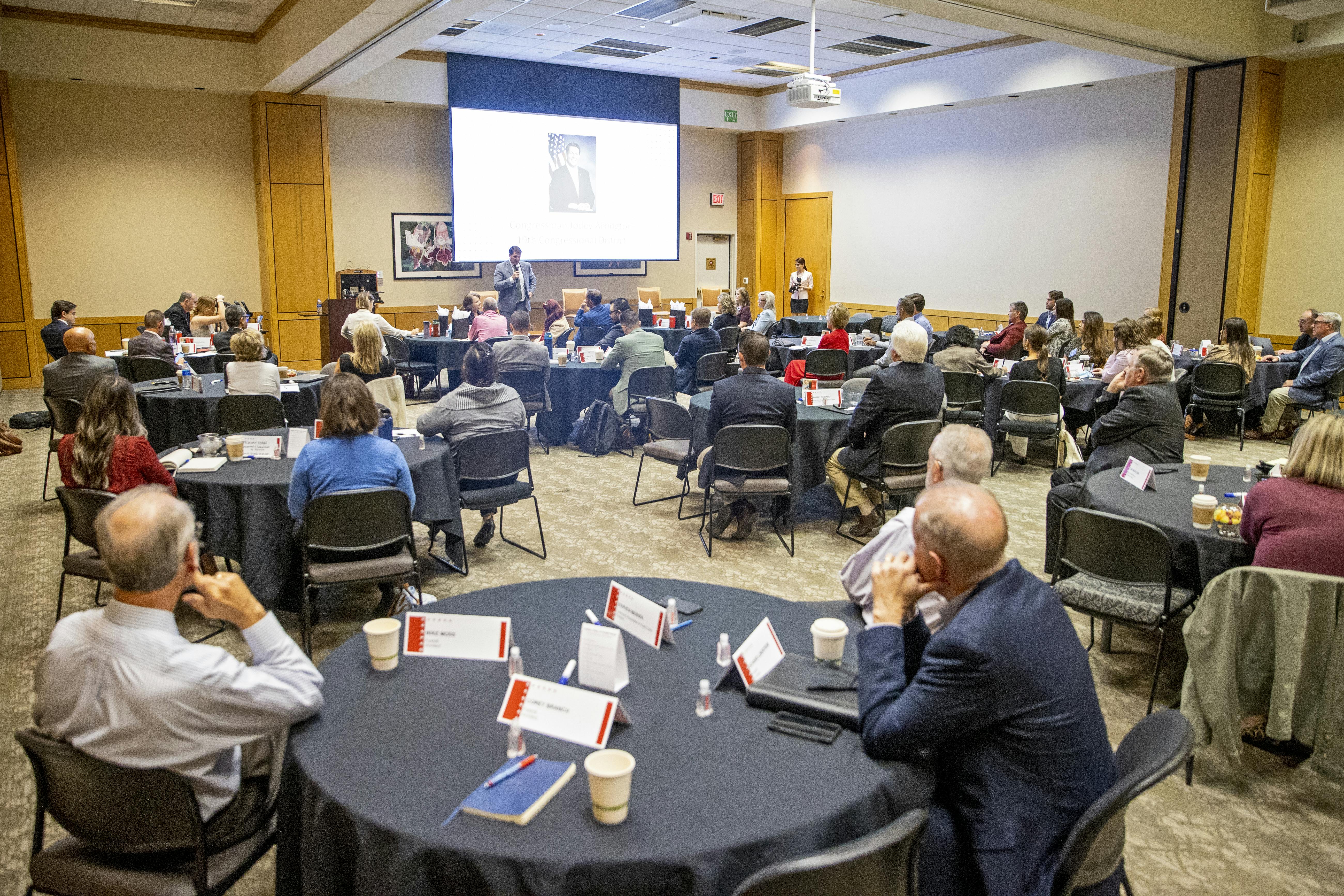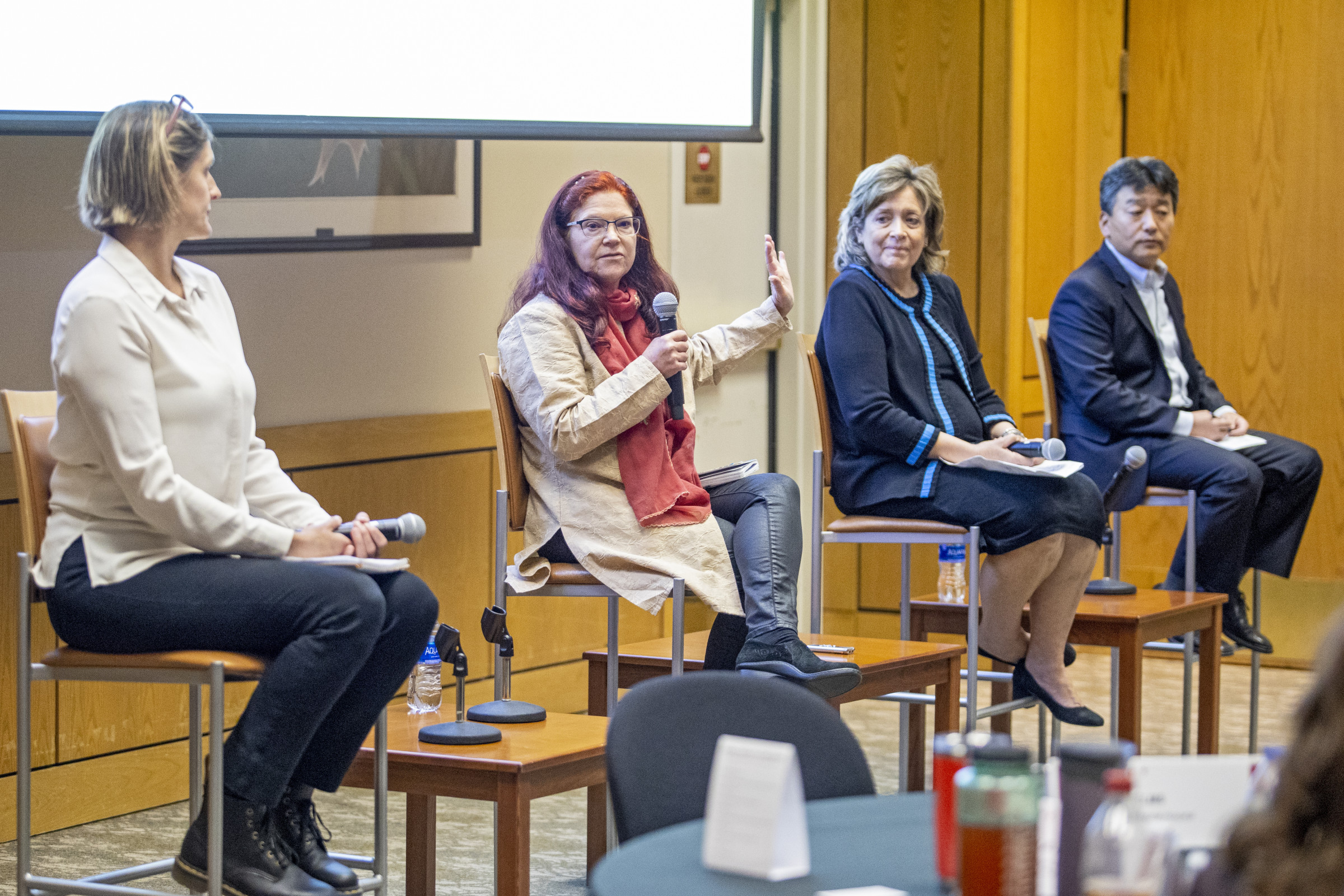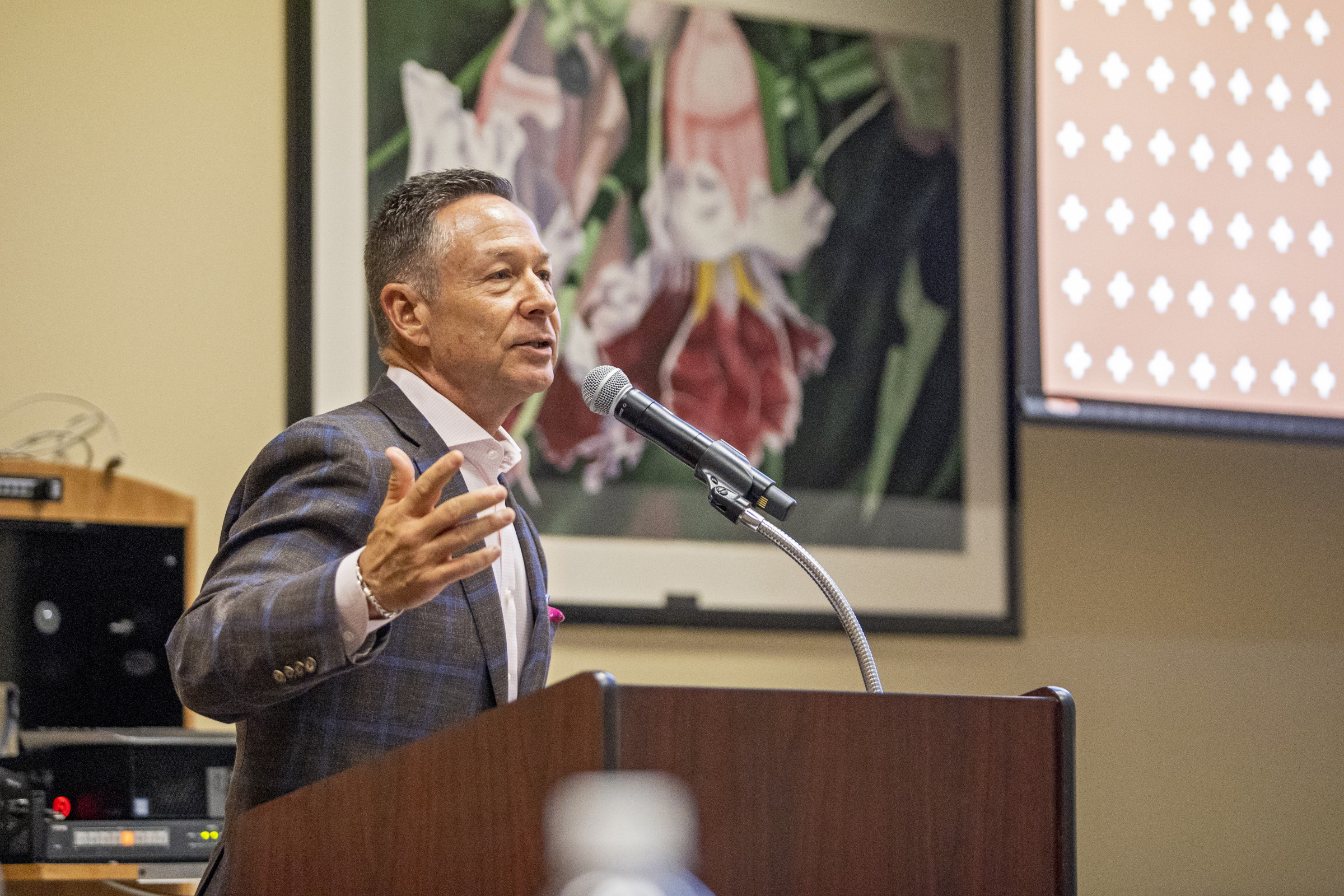Reimagining America's Rural Healthcare
Category: Healthcare
Written By: Lacy Mangum, CHID, IIDA, and Brian Williams, Creative Manager
Date: October 4, 2022

 Lacy Mangum, CHID, IIDA, is an interior designer in our Interiors Practice. Her experience includes eight years of work in healthcare as a licensed vocational nurse. As a designer and retired nurse, she contributes a unique perspective to her team and valuable insight into healthcare projects. Her voice was one of many at the Rural Health Symposium impacting the health and healthcare facilities of rural communities. Others from our Healthcare Practice in attendance included Director of Healthcare Kelby Sue, AIA, Chris Mundell, AIA, Anita Weber, AIA, and Design Professional Mishi Mathur.
Lacy Mangum, CHID, IIDA, is an interior designer in our Interiors Practice. Her experience includes eight years of work in healthcare as a licensed vocational nurse. As a designer and retired nurse, she contributes a unique perspective to her team and valuable insight into healthcare projects. Her voice was one of many at the Rural Health Symposium impacting the health and healthcare facilities of rural communities. Others from our Healthcare Practice in attendance included Director of Healthcare Kelby Sue, AIA, Chris Mundell, AIA, Anita Weber, AIA, and Design Professional Mishi Mathur.
Brian Williams is Parkhill's Creative Director. He collaborated with Lacy to write the following article and capture the essence of the event.
More than 50 collaborators gathered at the Rural Health Symposium in Lubbock, Texas, to discuss the current and future challenges of the rural healthcare crisis. “Reimagining America’s Rural Healthcare” included representatives from a multitude of professional disciplines across the Lonestar State. The purpose of the symposium is to gain a better understanding of the challenges facing rural health.
The all-day symposium included keynote speakers U.S. Representative Jodey Arrington and John Henderson, CEO of the Texas Organization of Rural & Community Health, as well as Q&A sessions with expert panels.
 The genesis of the symposium came from a simple conversation between friends and former colleagues. Dr. Debajyoti Pati of Texas Tech University and our own Chris Mundell, AIA, wanted to see how their respective university and Parkhill could use their resources in unison.
The genesis of the symposium came from a simple conversation between friends and former colleagues. Dr. Debajyoti Pati of Texas Tech University and our own Chris Mundell, AIA, wanted to see how their respective university and Parkhill could use their resources in unison.
“Some of these healthcare leaders in our communities didn’t even know each other before today, but now they do," Chris said. "So, it’s not just the education. We’ve made connections now with people that may work together in the future, which is awesome."
Those in attendance at Covenant Medical Center’s Knipling Education and Conference Center included healthcare leaders and officials from rural counties across the state, with representatives from organizations including Parkhill, Texas Tech’s Department of Design, Texas Tech’s Health Sciences Center, Covenant Health, and the Texas Organization of Rural & Community Health.
 “It’s really dear to me because I grew up in a small town that no longer has healthcare,” said Kelby Sue, Parkhill’s Healthcare Practice Leader and Floydada native. “Rural healthcare sometimes can’t afford professional services that someone like Parkhill has. But how can we give them professional guidance, while the University delivers from a research perspective? With our professional expertise and knowledge and Texas Tech’s ability to meet needs through a research perspective, then everybody gets something out of it.”
“It’s really dear to me because I grew up in a small town that no longer has healthcare,” said Kelby Sue, Parkhill’s Healthcare Practice Leader and Floydada native. “Rural healthcare sometimes can’t afford professional services that someone like Parkhill has. But how can we give them professional guidance, while the University delivers from a research perspective? With our professional expertise and knowledge and Texas Tech’s ability to meet needs through a research perspective, then everybody gets something out of it.”
The challenges faced by rural hospitals are numerous. Healthcare worker shortages, rising inflation, healthcare costs, unique rules and regulations, and broadband issues only scratch the surface of the litany of stressors.
Financial hardship is also prevalent among rural hospitals. Texas contains the most uninsured people of any state, forcing rural medical practices to foot the bill when patients can’t afford to pay.
The state has had the fastest rate of rural hospital closures in the nation – with 27 facilities closed since 2010, and another 55% currently at risk for closure. This gives an uncertain future to the more than 3 million Texans that depend on their care.
 That may not sound like a big number when you compare it to the densely populated areas throughout the state but consider this:
That may not sound like a big number when you compare it to the densely populated areas throughout the state but consider this:
If the number of people receiving medical care from urban hospitals was to form a U.S. state, they would be the 34th largest state in the nation.
According to Covenant Health Care Chief Administrative Officer, Steve Beck, rural hospitals play a vital role not only in their own communities but in the entire healthcare system.
“Without rural hospitals, we would not have survived the pandemic," Steve said. "Rural hospitals saved our state… They took on patients spilling in from other big cities.”
The group at the symposium does not consider the discussion had to be a solution, but a path forward. They hope to continue the conversation among the top professionals from all disciplines involved in the healthcare industry to better understand how to serve rural communities.
“All of these problems have a physical design implication," Dr. Debajyoti said. "We are meeting today to understand what these implications are and how to address the demands."


